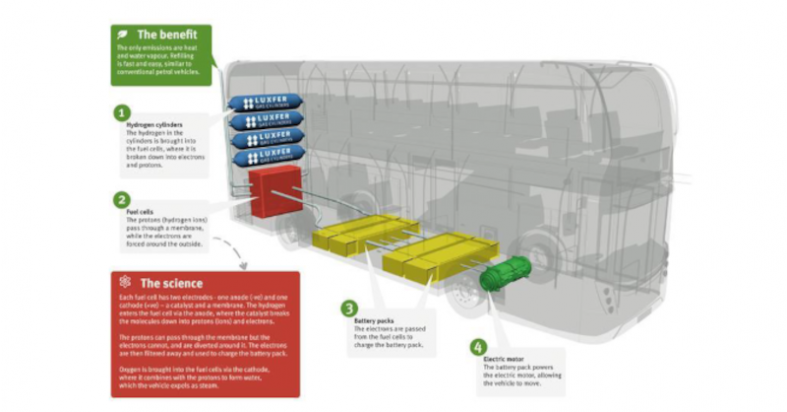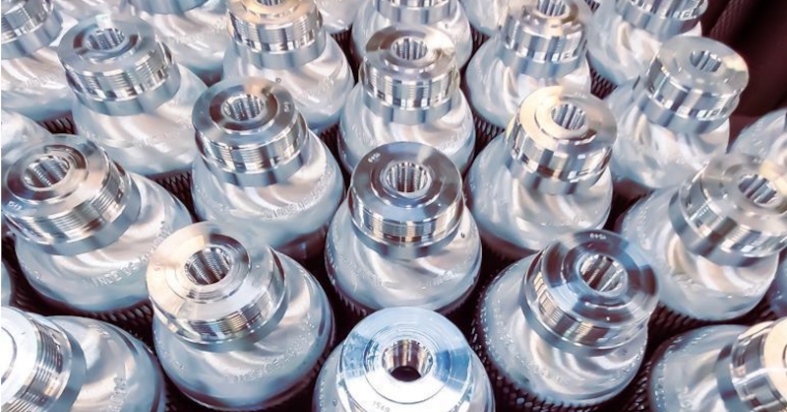US +1800 764 0366 | Europe & Middle East +44 (0)115 980 3800 | Asia-Pacific: +61 2 7227 5369

COP26 brought together world leaders to commit to using clean fuels and address the role of hydrogen to help meet net zero targets. Here, Business Development Manager at Luxfer Gas Cylinders Keith Croysdale examines the challenges and opportunities of the hydrogen revolution, and crucially, what the future holds for bulk gas transportation.
The UN Climate Change Conference stimulated debate on securing net zero and keeping the 1.5 degrees warming target within reach, alongside mobilising finance and protecting communities and natural habitats.
Yet while the summit led to some fresh targets, initiatives and agreements, barriers remain. Described in BP’s Statistical Review of World Energy 2021 report, oil takes the lion’s share of the energy mix at 31%, with coal the second largest at 27%.
Making hydrogen accessible
With continued reliance on fossil fuels, making progress to wean nations to alternative sources is critical. The factors that will determine this include:
- Infrastructure – this will play a key role in the ultimate success of hydrogen take-up, but hydrogen pipelines will may take until the end of the decade to become a reality, and it’s possible that won’t ever reach every hydrogen user.
- Other solutions – for instance ammonia has been touted as a medium for carrying hydrogen over long distances, it is highly toxic and handling it presents risks. Masses of poisonous liquid being located in a UK port, such as Southampton, will be a challenging proposition.
- Green hydrogen – there is an ambition to turn the UK into a green hydrogen-producing hub and in 2021 the Prime Minister set out a vision for the UK to be the ‘Qatar of hydrogen’. But to turn this into a reality, energy companies need to carry as much hydrogen as possible from the production site to the point of use, safely and cost-efficiently.
Where no gas networks exist, bulk gas transportation cylinder systems help local governments, energy firms and gas distribution networks meet demand, and we believe bulk gas transportation modules are the only solution that is broadly viable.

How hydrogen is making waves
Bulk gas transportation (BGT) isn’t only applied to lorries and trailers, and Luxfer is working in a range of industries to innovate at moving hydrogen to where it’s most needed. Around coastal cities, as an example, BGT ships can deliver hydrogen across the waterways, and smaller vessels can then transport the fuel via estuaries to depots and fillings stations.
This kind of marine solution means vast quantities of hydrogen can be moved into densely populated areas – without worsening congestion and adding to the pollution challenges on the in-demand UK road network. This issue is particularly important when it comes to getting hydrogen into major cities.
There are key differences for hydrogen fuel over oil and gas, specifically:
• The model for production and distribution will not be as centralised. Hydrogen is a departure from giant refineries transporting over hundreds of miles, huge pipelines from overseas, and a single interconnected gas network.
• Producing hydrogen will be localised, with hundreds of hubs in the near future spanning UK regions, towns or even factories. Hydrogen will, for the most part, be made less than 50 miles from where it will be used. The hydrogen ecosystem planned at Thames Estuary, for example, can deliver supply via the river into central London.
Ports, including Antwerp, which is the biggest port area in the world, have announced decarbonisation plans. Directly delivering hydrogen fuels via BGT ships will support them in meeting sustainability targets, and this is particularly desirable where the vessels themselves are powered by zero-emission systems.
Alternative fuel expertise at Luxfer is powering the world’s first hydrogen work boat, in partnership with Compagnie Maritime Belge (CMB), which is also based in Antwerp. And we’re working on the world’s first hydrogen tugboat for Antwerp Harbour.
These are just a handful of the hydrogen projects that will help decarbonise the sector, but it will be 2023/24 when people will begin to see this change.

Innovating in cylinder technology
Innovation is at the heart of Luxfer, and we have applied our trusted, proprietary technology to the bulk gas transport market in the form of our Type 3 cylinder.
This cylinder features a Luxfer-manufactured aluminium liner, fully over-wrapped with aerospace-grade carbon fibre. Because our Type 3 cylinder is heavier than a Type 4, this might seem counterintuitive to using a Type 4 cylinder with a polymer liner. However, the high thermal conductivity of our aluminium liner removes heat from the gas generated during the filling process. The heat produced in a fast-fill could damage a Type 4 polymer-lined cylinder. To circumvent this you’d need to chill the gas or slow down the filling time – and companies want a speedy turnaround.
With Type 3 technology, all of the hydrogen involved in the system can be utilised, with no wastage, so they are the right solution because they are more robust, fill faster, won’t leak, and therefore they increase the asset value of the entire system. Plus, Luxfer’s G-Stor™ cylinders are among the highest-capacity, lightest-weight Type 3 alternative fuel cylinders in the world.
Ensuring unrivalled safety and quality
High pressure gas containment demands the utmost standards of safety and quality, and our proven track record is why Luxfer is leading the market.
We have an 80-year history in cylinder technology, with our presence in the alternative fuels sector underpinned by considerable legacy in healthcare. We produce the smallest and most lightweight oxygen cylinders – over 70 million of which are in operation across the globe.
Our success in providing alternative fuel systems is not new, in fact this is our third major exploration of the hydrogen market. It means our latest designs are based on the work of Luxfer engineers from 15 years ago, updated to embed the very latest in cylinder technology. We’ve essentially been a sleeping giant for two decades, putting in the work behind the scenes and applying what we’ve learnt along the way, honing our capabilities so we’re ready.
The landscape is now hugely competitive. Some companies are new to hydrogen storage but it’s challenge because they are tasked with developing quickly the know-how Luxfer has evolved through 80 years.
A fast-growing market for hydrogen solutions
There is a real opportunity for the hydrogen revolution to gather momentum, which is exciting, and the demand we’re experiencing underpins this. We’re now at the point of bringing a viable solution to market, with a credible technology that is in its infancy, and will increase exponentially from next year.
Although there is good momentum our lead time is due to a robust programme of testing and approval to meet the highest safety standards. Luxfer teams in Canada, America and England are collaborating as part of a significant team effort to design and produce our BGT systems. It’s true co-creation.
Naturally other companies want to get involved and we view this positively because it nurtures innovation and will further advance the hydrogen revolution.
For instance, we’re involved with a number of organisations that are pioneering the adaption of internal combustion engines to work on 100% hydrogen, which is a completely difference proposition for fleets around the world.
The technology is evolving every day to create an environment that will allow a hydrogen economy to prosper. While we have made huge strides, Luxfer isn’t stopping. We have an ambition to push this technology, helping deploy hydrogen on a game changing scale – safely of course – and we have the right expertise to do it.